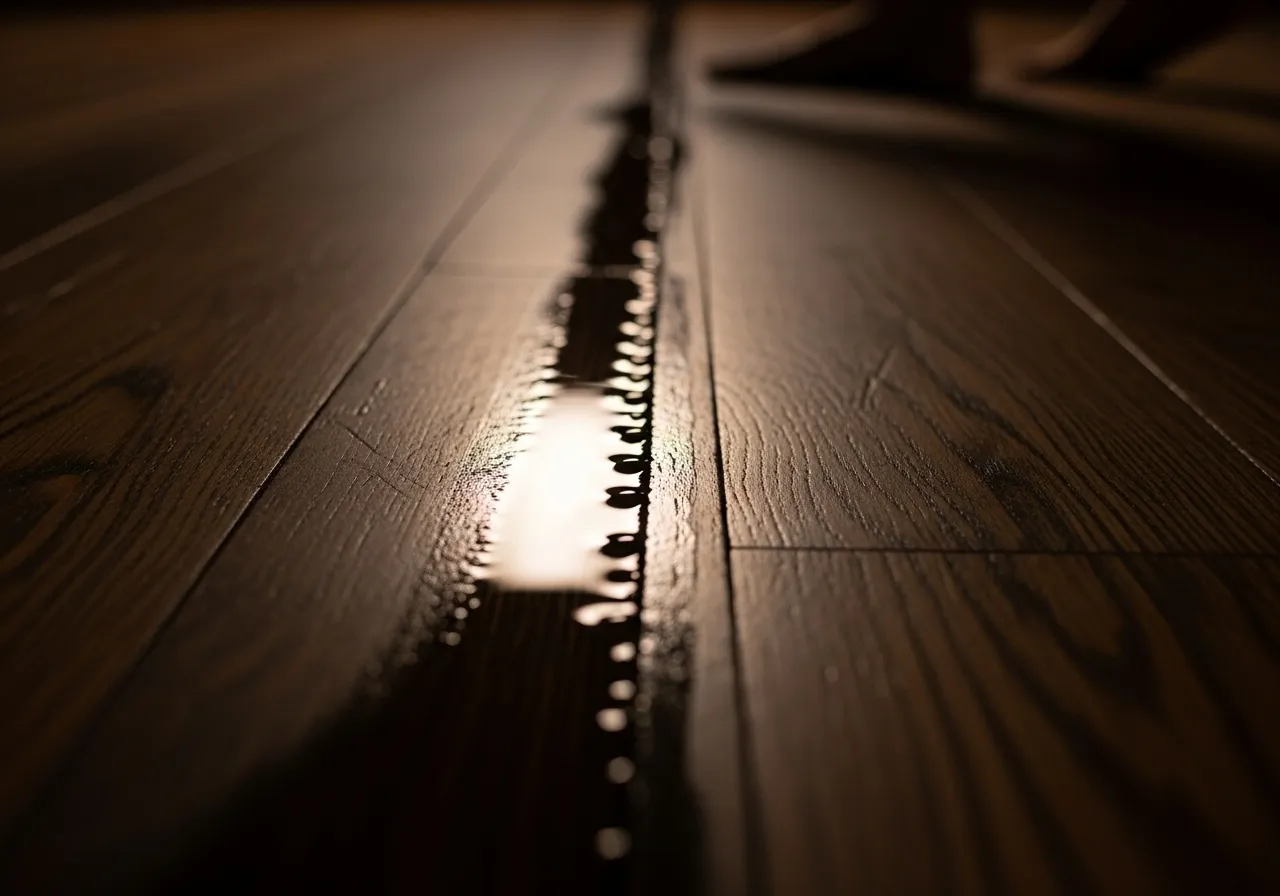
Common Mistakes to Avoid: The Best Way to Clean Wood Floors Without Damaging Them
Knowing what not to do is just as important as knowing what to do. Many well-intentioned cleaning habits can unfortunately cause long-term damage to hardwood floors. By avoiding these common pitfalls, you can ensure your floors remain in excellent condition.
Pitfall #1: Using Too Much Water
This is the most common and damaging mistake. Wood is a natural, porous material. Even with a strong surface seal, excessive water can find its way into the seams between boards. Over time, this moisture can cause the wood to swell, cup, warp, or become discolored. This is why we stress the importance of a “damp” mop, not a “wet” one. The floor should never be saturated, and any moisture should evaporate almost immediately.
Pitfall #2: Using the Wrong Cleaners
The marketplace is filled with “all-purpose” cleaners, but many of them are too harsh for your floor’s finish. Here are specific products to avoid.
Can you use vinegar on hardwood floors? This is one of the most frequently asked questions in home care. The short, safe answer is no, you should not use vinegar on hardwood floors. While vinegar is a popular DIY cleaner, it is an acid. With repeated use, the acetic acid in vinegar can slowly break down and etch the polyurethane finish of your floor. It might look clean at first, but over time, it will dull the shine and compromise the protective layer, leaving the actual wood vulnerable to damage. Some flooring manufacturers will even void their warranty if vinegar-based cleaners are used.
Other Cleaners to Avoid:
- Ammonia-Based Cleaners: Like vinegar, ammonia is too harsh and can strip the finish and dull the floor.
- Oil Soaps or Waxes: Products that promise to “rejuvenate” or “shine” your floors often contain oils or waxes. On a modern polyurethane-sealed floor, these products do not soak in. Instead, they build up on the surface, creating a hazy, sticky film that is difficult to remove and attracts more dirt.
- Abrasive Cleaners: Scouring powders or creams will scratch and permanently dull your floor’s finish.
- Steam Mops: While great for some surfaces like tile, steam mops should never be used on hardwood. The combination of high heat and pressurized steam can force moisture deep into the wood and between boards, causing irreversible damage to both the finish and the wood itself.
Pitfall #3: Skipping the Dry-Cleaning Step
It can be tempting to jump straight to mopping, but this is a critical error. When you apply a damp mop to a floor that still has dust, sand, or other small particles on it, you are essentially turning your mop head into a piece of fine-grit sandpaper. This creates countless microscopic scratches in the finish, which is what causes a floor to look dull and worn out over time. Always vacuum or dust mop thoroughly first.
Pitfall #4: Forgetting Protective Measures
Preventative care is just as important as cleaning. Small adjustments can save your floors from scratches and dents.
Use Felt Pads: Apply self-adhesive felt pads to the bottom of all furniture legs, including chairs, tables, and sofas. Check them periodically and replace them when they become worn or compressed.
Lift, Don’t Drag: When moving furniture, always lift it completely off the floor. Dragging heavy items can cause deep gouges that are expensive to repair.
Trim Pet Nails: Keep your pets’ nails trimmed regularly to prevent them from scratching the floor as they walk and play.

















